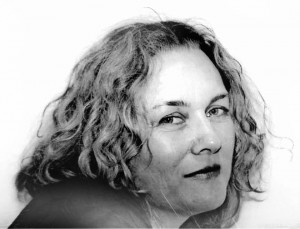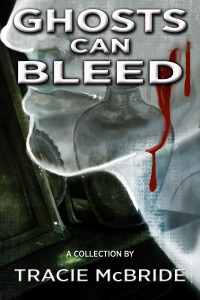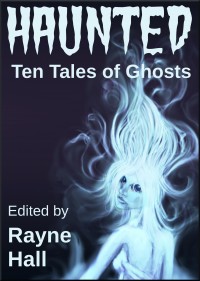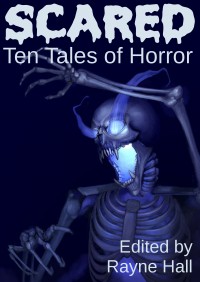Joining us today is Fantasy author Tracie McBride. Thank you so much for taking time out of your busy schedule to answer a few nosy probing questions for us!
1. How would you describe your fiction?
I mostly write dark speculative fiction; my stories can be categorized as horror, fantasy or science fiction, or sometimes as the bastard offspring of all three, and they usually have a dark slant to them. A reviewer once said that I write “with an eye to easy consumption and getting the story told,” which is as good a description of my style as any, although I do like to mix it up a little with my story structure.
2. What kind of books do you most enjoy reading?
I’ve been a speculative fiction fan for as long I can remember. Childhood literary loves included “The Phantom Tollbooth”, “The Lion, The Witch and the Wardrobe” and “The Hobbit.” In my teens it was the likes of Robert Heinlein, Kurt Vonnegut and George Orwell. And then…well, the list of favourites is extensive. I love books that pose a big What If? question and explore all the ramifications of that question. I also love books that are dense with originality and imagination.
3. Ghost stories have always intrigued many readers. What do you think is it about ghosts that fascinates people?
I don’t know about other people, but the thought that death might be final scares the bejesus out of me. And the thought that death might NOT be final is pretty scary, too. The thought that if your life and/or death is traumatic enough, you could get stuck in some in-between state, condemned throughout eternity to tread the same horrifying path…that’s the scariest thought of all.
4. Your short story “Ghosts Can Bleed” published in Haunted: Ten Tales of Ghosts (edited by Rayne Hall) raises the question how someone knows they’re a ghost. Where did this idea come from?
I’m something of a fence-sitter when it comes to believing in the existence of ghosts, but if they are real, I don’t think they know they’re dead. But the origins of “Ghosts Can Bleed” come from somewhere quite different. Many years ago, I was watching a reality TV show called “Stars In Their Eyes,” where ‘ordinary people’ got to dress up and impersonate their favourite singer. They showed a ‘before and after’ transformation of the contestants, with a short film clip of their usual daily lives followed by a Big Reveal of them in costume. This particular episode featured a young man who worked in a pantihose factory. His job was to unroll pantihose onto a frame and check it for holes. And that was it. Eight hours a day, five days a week. The show’s presenter said something along the lines of, “That must be pretty boring,” and the look on the young man’s face…in that moment, he was the embodiment of Thoreau’s ‘life of quiet desperation’. “Ghosts Can Bleed” is a story about many things, one of which is how an unfulfilled life can turn someone into a ‘living ghost’.
5. When you get the initial idea for a story, how does this idea shape into a story plot?
I usually build up the story around a central image, like moulding a snowball around a stone, until it reaches a pleasing size and shape. I ask myself, what needs to happen here to bring the characters to this point, for this image to make some kind of sense? I flesh it out further by asking myself another question – what is this story really about? What is the underlying theme?
6. You’ve had short stories published in many anthologies, such as Haunted: Ten Tales of Ghosts, Scared: Ten Tales of Horror, Undead: Ten Tales of Zombies, Horror for Good, Phobophobia, Horror Library Vols 4 and 5 . Each anthology features stories by several authors. What do you like about seeing your work published next to those of other writers? What would you say is the appeal of anthologies for readers?
Although it’s often said that writing is a solitary pursuit, one of the most satisfying aspects of it for me is the collaborative process. I enjoy working with editors, oohing and aahing over the cover art, and seeing how the final product has come together with stories from several different writers, often with diverse styles and approaches to the anthology theme. And I have to confess to a touch of vanity whenever I get to share a Table of Contents with someone that I think is famous, or with a writer that I particularly admire (I always hope that some of their talent will rub off on me).
If you’ll allow me to paraphrase Forrest Gump, an anthology is a lot like a box of chocolates; you might not like every flavour, but if you’ve chosen wisely, chances are you’ll enjoy the majority of them. If you buy an entire novel by an unknown author, you’re taking a risk, because you might not enjoy it. An anthology is less risky; if you don’t like one story, you can skip over it to the next one. Anthologies are a great way to acquaint yourself with unfamiliar authors as well as enjoy the work of your favourites.
About Tracie McBride
 Tracie McBride is a New Zealander who lives in Melbourne, Australia with her husband and three children. Her work has appeared or is forthcoming in over 80 print and electronic publications, including Horror Library Vols 4 and 5, Dead Red Heart, Phobophobia, Haunted: Ten Tales of Ghosts, Scared: Ten Tales of Horror, Undead: Ten Tales of Zombies and Horror for Good. Her debut collection Ghosts Can Bleed contains much of the work that earned her a Sir Julius Vogel Award in 2008. She helps to wrangle slush for Dark Moon Digest and is the vice president of Dark Continents Publishing. She welcomes visitors to her blog at http://traciemcbridewriter.wordpress.com/.
Tracie McBride is a New Zealander who lives in Melbourne, Australia with her husband and three children. Her work has appeared or is forthcoming in over 80 print and electronic publications, including Horror Library Vols 4 and 5, Dead Red Heart, Phobophobia, Haunted: Ten Tales of Ghosts, Scared: Ten Tales of Horror, Undead: Ten Tales of Zombies and Horror for Good. Her debut collection Ghosts Can Bleed contains much of the work that earned her a Sir Julius Vogel Award in 2008. She helps to wrangle slush for Dark Moon Digest and is the vice president of Dark Continents Publishing. She welcomes visitors to her blog at http://traciemcbridewriter.wordpress.com/.
Click on the cover for more information:





Very interesting looking and sounding books!
The webpage looks a bit odd today. Yesterday, it looked superb. Maybe a temporary glitch?
Tracie, you mention your hope that when you’re in an anthology with great writers, some of their talent rubs off on you. Has it ever “rubbed off”?
Hmm, everything looks fine on my end. Checked it out on two different browsers.
Very good article. I will be dealing with a few of these issues as well..